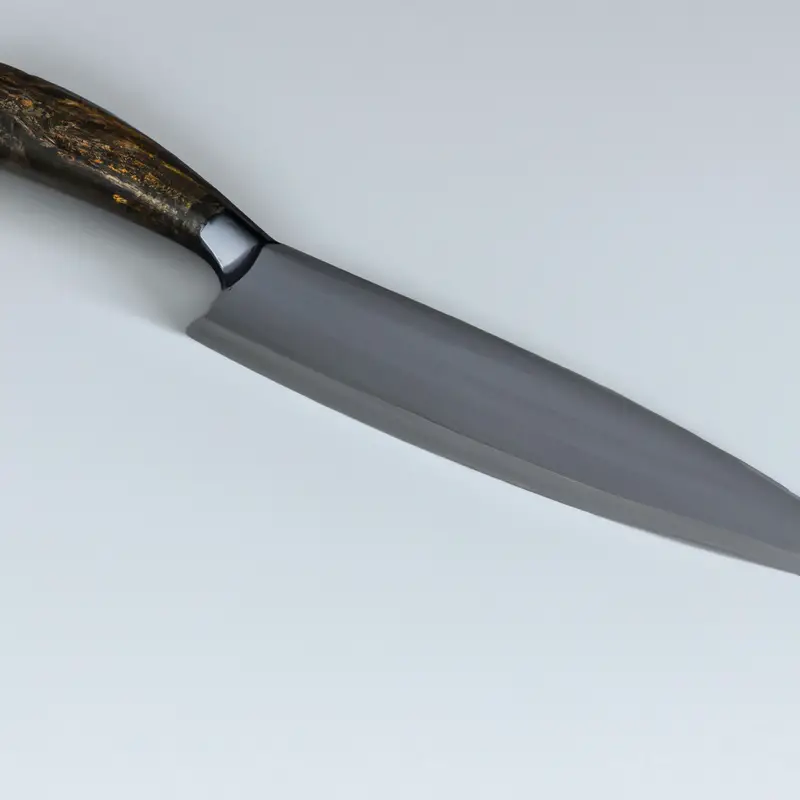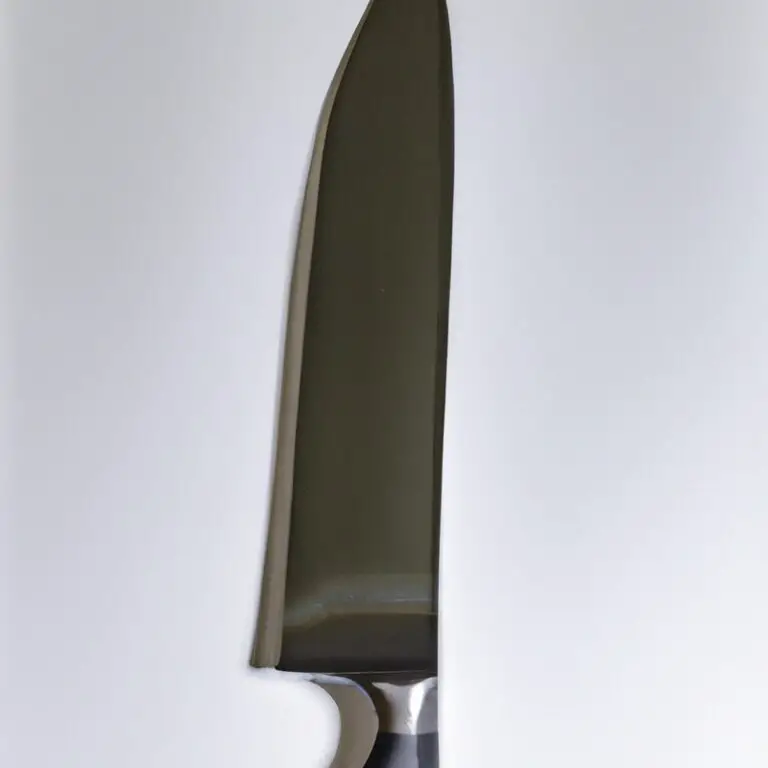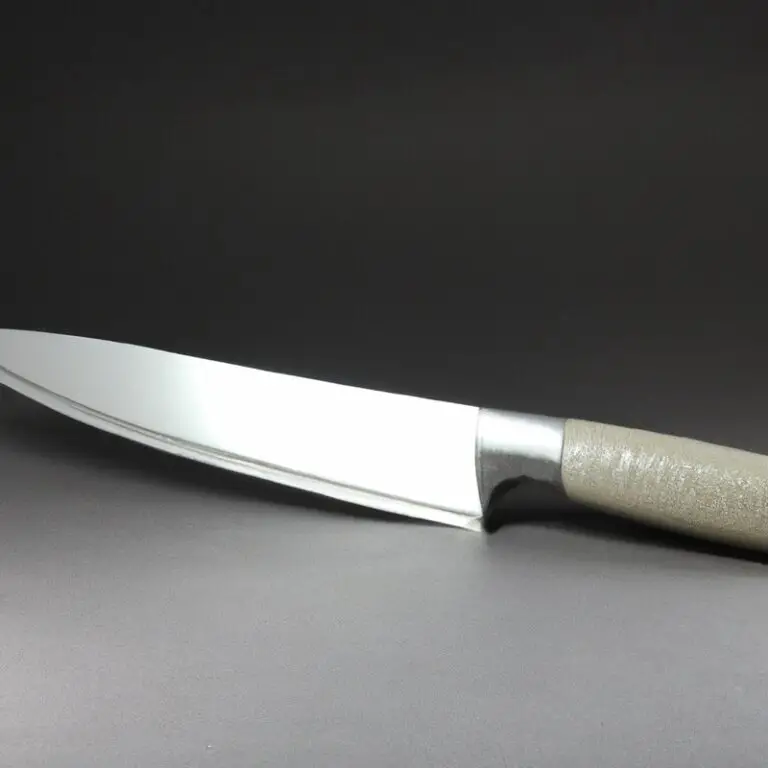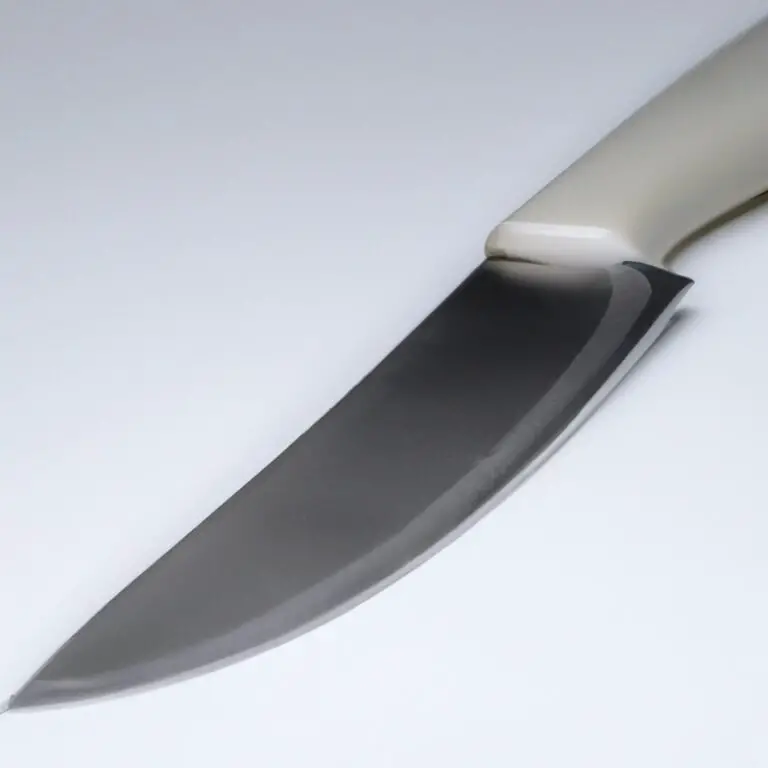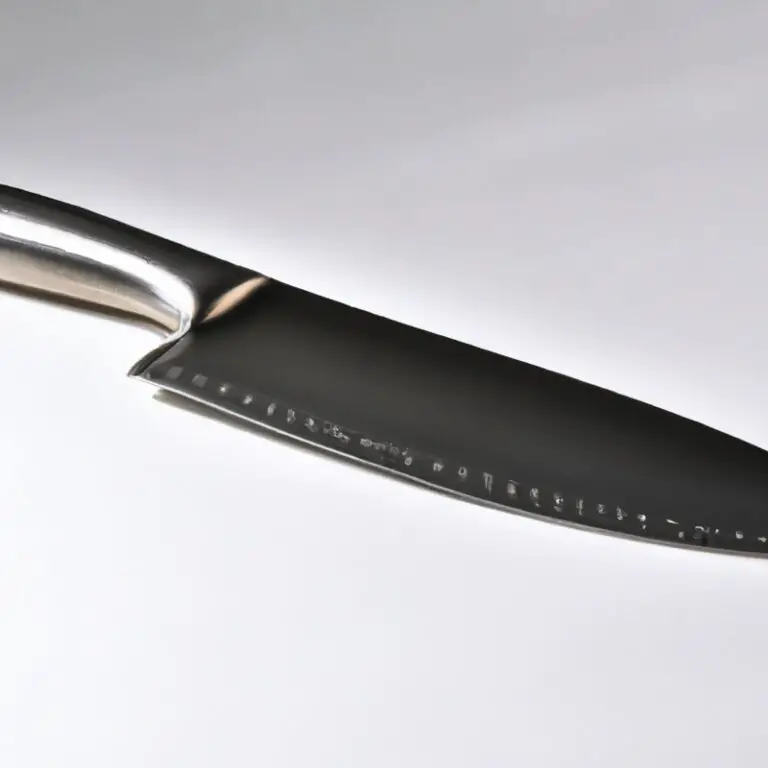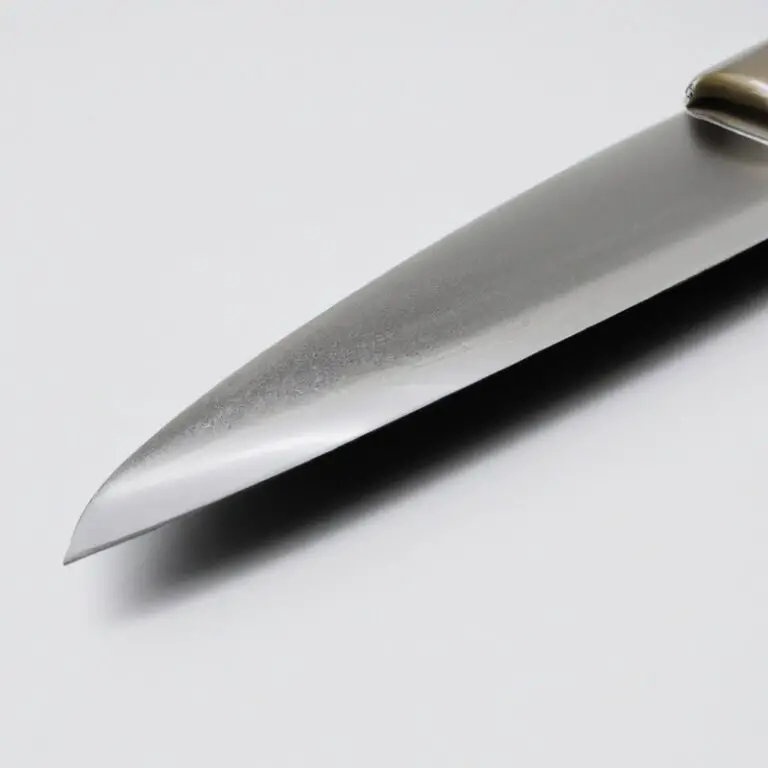How To Cut Through Hard-Skinned Vegetables With a Santoku Knife? Master It Now
Key Takeaways:
- A Santoku knife is a versatile tool that can be used to easily cut through hard-skinned vegetables with its sharp blade and unique design.
- The rocking motion of a Santoku knife allows for efficient and precise cuts through tough vegetables like squash, pumpkins, and root vegetables.
- Proper technique and maintenance of a Santoku knife are essential for optimal performance and longevity, including regularly sharpening the blade and using a honing steel to maintain its edge.
- Using a Santoku knife can enhance your cooking experience and save you time in the kitchen by simplifying the process of cutting through even the toughest of vegetables.
Do you struggle with cutting through tough-skinned vegetables like squash or pumpkin? A Santoku knife might just be the answer to your kitchen woes.
With its unique features and specialized design, a Santoku knife is ideal for tackling hard-skinned vegetables.
But how do you use it correctly? In this beginner’s guide, I’ll explore the anatomy of a Santoku knife, offer tips for maintaining its sharpness, and provide the right technique for handling it.
Additionally, I’ll share the top five vegetables that a Santoku knife is perfect for cutting, and the benefits it offers over other knives.
Keep reading to up your veggie-cutting game.
| Vegetable | Cutting Technique |
|---|---|
| Butternut Squash | Cut off both ends, then slice in half vertically. Scoop out the seeds. Lay each half flat and slice into desired shapes. |
| Pumpkin | Cut off the top and bottom, then slice in half. Scoop out the seeds. Lay each half flat and cut into desired shapes. |
| Acorn Squash | Cut off both ends, then slice in half lengthwise. Scoop out the seeds. Lay each half flat and slice into desired shapes. |
| Spaghetti Squash | Cut off both ends, then slice in half lengthwise. Scoop out the seeds. Lay each half flat and use a fork to scrape out the flesh into spaghetti-like strands. |
| Buttercup Squash | Cut off both ends, then slice in half lengthwise. Scoop out the seeds. Lay each half flat and slice into desired shapes. |
| Kabocha Squash | Cut off both ends, then slice in half vertically. Scoop out the seeds. Lay each half flat and slice into desired shapes. |
| Watermelon | Cut off both ends, then cut a thin slice off one end to create a stable base. Cut off the rind in sections, following the curve of the melon. |
Understanding the anatomy of a Santoku knife: A beginner’s guide
To effectively use a Santoku knife for cutting hard-skinned vegetables, it’s essential to understand its anatomy and how it differs from other knives. The most distinctive features of a Santoku knife are its flattened blade and the dimples or grantons on it, which prevent food from sticking to the blade.
The blade length typically ranges from 5 to 7 inches and has a curve from the handle to the tip.
Santoku knives also have a thinner blade, which allows for more precise cutting. Understanding the anatomy of a Santoku knife will enable you to use it more effectively and get the most out of your cutting experience.
Why a Santoku knife is ideal for cutting hard-skinned vegetables
A Santoku knife is ideal for cutting hard-skinned vegetables due to its unique features. The Granton edge, also known as the scalloped edge, creates air pockets between the blade and the vegetable, reducing the friction and sticking during the cutting process.
Also, the wider blade of a Santoku knife provides ample surface area to slice through the tough and dense skin of vegetables like squash, pumpkins, and beets.
The blade’s thinner profile also enables precise slicing, decreasing wastage and ensuring more uniform cuts. The angled shape of the knife’s blade serves as a rock-chopping motion, allowing effortless and efficient chopping and dicing of the vegetables.
Overall, the Santoku knife’s design and functionality make it an excellent choice for cutting hard-skinned vegetables.
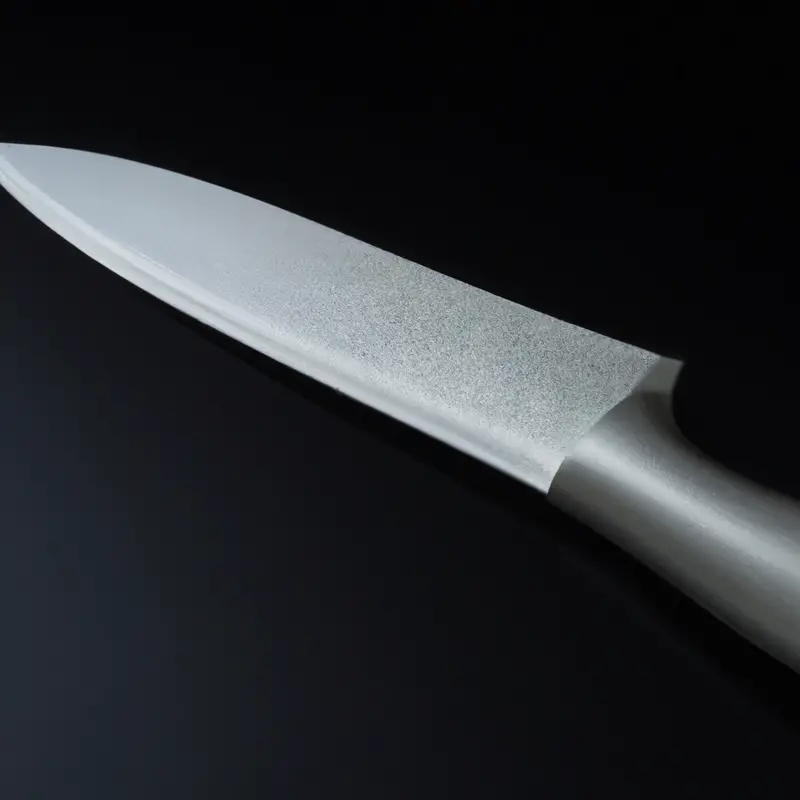
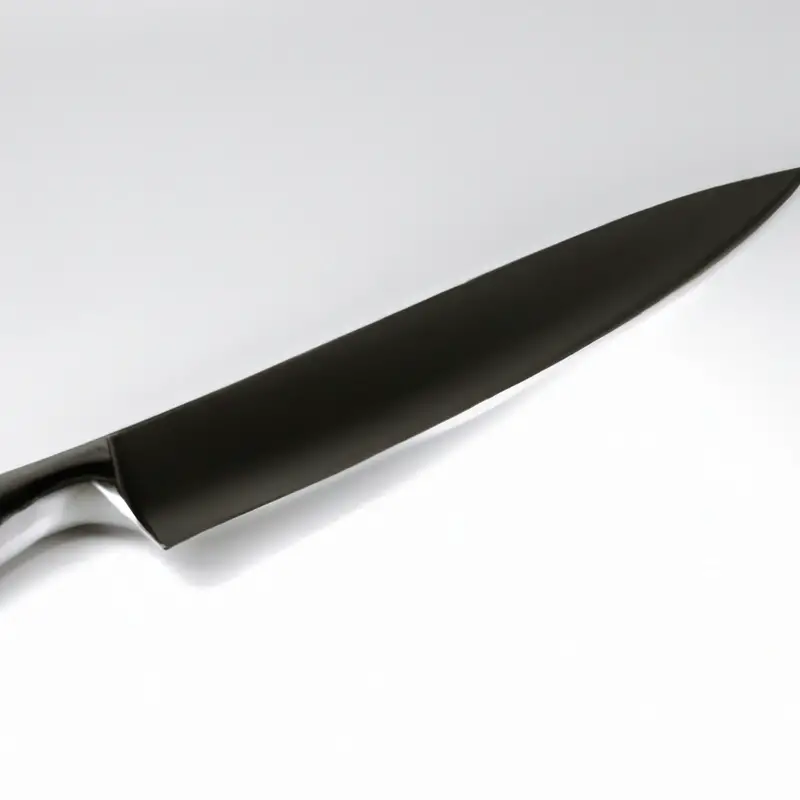
Maintaining the sharpness of your Santoku knife
To maintain the sharpness of your Santoku knife, it’s essential to follow some simple steps. Firstly, never use a dishwasher to clean the knife, as the high temperature can damage the blade.
Instead, clean the knife with warm water and mild soap.
After washing, dry it with a soft cloth or towel. Secondly, sharpen it regularly using a whetstone or honing steel.
Thirdly, store the knife properly in a knife block or sheath to protect the blade from damage.
Lastly, avoid using the knife on hard surfaces or cutting bones, as this can blunt the blade. With proper care, your Santoku knife will stay sharp and ready for use for a longer period.
The right technique for holding and handling a Santoku knife
The right technique for holding and handling a Santoku knife is crucial for achieving clean cuts and preventing accidents. Firstly, hold the handle with a firm grip and grip the blade’s heel with your other hand.
Next, position the blade at a 15-20 degree angle to the cutting board.
Use a rocking motion to slice through the vegetable and avoid pressing down too hard. Remember to keep your fingers tucked away from the blade to avoid injury.
It is important to maintain a consistent motion and to keep the blade sharp to prevent exerting too much pressure when cutting.
Practice makes perfect, and with time, you will master the right technique for using a Santoku knife with ease.
Choosing the right size of Santoku knife for hard-skinned vegetables
Choosing the right size of Santoku knife for hard-skinned vegetables is crucial for efficient cutting. Santoku knives typically range from 5-7 inches in blade length.
A 7-inch blade is ideal for larger fruits and vegetables like watermelon and pumpkin, while a 5-inch blade is perfect for smaller hard-skinned vegetables like carrots and squash.
When selecting a Santoku knife, ensure that the blade has a slight curve to allow for a rocking motion while cutting. The handle should also be comfortable and have a good grip to prevent any accidents during use.
Remember to choose a size that matches your hand size for optimal control and precision.
By selecting the right size Santoku knife for your hard-skinned vegetables, you can make cutting through them a breeze.
Top five hard-skinned vegetables that require a Santoku knife for cutting
Here are the top five hard-skinned vegetables that require a Santoku knife for cutting:
- Pumpkin – The tough exterior of a pumpkin needs a sharp Santoku knife to get through without damaging the flesh.
- Butternut squash – With its hard, smooth exterior and dense flesh, a Santoku knife is the best tool to evenly chop or dice butternut squash.
- Watermelon – The thick rind of a watermelon can be difficult to cut through, but a Santoku knife can handle the task with ease.
- Acorn squash – Similar to butternut squash, acorn squash features a hard exterior that is best tackled with a Santoku knife.
- Spaghetti squash – The tough, fiber-filled interior of spaghetti squash requires a sharp blade to easily cut through it.
By using a Santoku knife on these hard-skinned vegetables, you’ll be able to prepare them efficiently and with less effort.
Differences between Santoku knives and other types of knives for cutting hard-skinned vegetables
Santoku knives differ from other knives for cutting hard-skinned vegetables due to their unique blade shape. Santoku knives typically have a wider blade with a flat edge, which allows for a more efficient and precise cutting motion.
In contrast, other knives such as chef knives and paring knives have a curved blade that can make it challenging to slice through tough vegetable skin evenly.
Additionally, Santoku knives often have a thinner blade, making it easier to maneuver and control when cutting through hard-skinned vegetables. Another significant difference is that Santoku knives usually have a shorter blade length, which can be helpful for cutting smaller or unevenly sized vegetables.
Overall, Santoku knives are specifically designed for slicing through hard-skinned vegetables, making them an excellent choice for the task.
The benefits of using a Santoku knife over other knives for cutting hard-skinned vegetables
The Santoku knife excels in cutting hard-skinned vegetables due to its unique design and features. Unlike other knives, the Santoku knife has a wider blade with indentations, allowing for smoother and more precise cuts.
It also has a sharp, angled tip that pierces through tough skins effortlessly.
The weight distribution of a Santoku knife is evenly distributed, providing more control and reducing the risk of injuries. Its ergonomic handle design also ensures a comfortable and secure grip, allowing for extended periods of cutting without fatigue.
With a Santoku knife, you can cut through hard-skinned vegetables with ease, saving you time and minimizing wastage.
Overall, the Santoku knife is a versatile and efficient tool that every kitchen should have for cutting hard-skinned vegetables.
Using a Santoku knife to minimize wastage while cutting hard-skinned vegetables
Using a Santoku knife for cutting hard-skinned vegetables minimizes wastage due to its unique design. The flat cutting edge and low tip angle allow for clean and precise cuts, reducing the loss of edible portions of the vegetable.
Additionally, the sharpness of the blade means less force is needed to cut through the vegetable, resulting in fewer accidental slip-ups and cutting errors.
Hold the vegetable firmly and use a smooth slicing motion to cut through the skin, maintaining the angle of the blade for optimal performance. With the right technique and a Santoku knife, you can efficiently and effectively cut through hard-skinned vegetables while minimizing wastage.
Difference between a Santoku knife and a cleaver, and which one to use for cutting hard-skinned vegetables
A Santoku knife is a Japanese knife that is primarily used for slicing, dicing, and mincing. It has a thinner blade than a cleaver and a curved tip that makes it perfect for precise cutting and chopping.
A cleaver, on the other hand, has a wider and thicker blade that is meant for heavy-duty cutting, such as cutting through bones and tough meats.
When it comes to cutting hard-skinned vegetables, such as butternut squash, pumpkin, and watermelon, a Santoku knife is the better choice. It has a sharp and pointed tip that can make clean and precise cuts on the hard skin, whereas a cleaver may crush or break the vegetable due to its weight.
The thin blade of the Santoku knife also allows for more control and ease of use when slicing through the vegetable.
In summary, if you’re looking to cut hard-skinned vegetables, a Santoku knife is the better choice over a cleaver. While a cleaver may be better for heavier tasks, such as cutting through bones and meat, it may not be the best option for delicate vegetable cuts.
Final Verdict
Understanding how to cut through hard-skinned vegetables with a Santoku knife is a valuable skill that every home cook should possess. By following the right techniques for holding and handling the knife, choosing the appropriate size, and selecting the right vegetables, you can cut through even the toughest skins with ease.
With the tips provided in this article, you can maintain the sharpness of your Santoku knife and reduce wastage in the kitchen.
Compared to other knives, the Santoku knife’s unique design and benefits make it the ideal choice for cutting hard-skinned vegetables. Remember to practice caution when using a sharp knife and always prioritize safety.
As you continue to enhance your culinary skills, mastering this technique will make your cooking experience smoother and more enjoyable.
Happy cooking!

